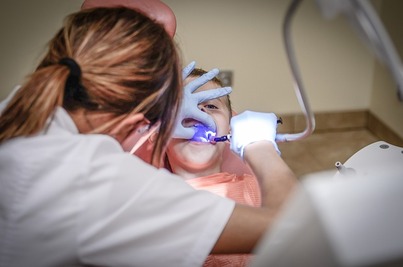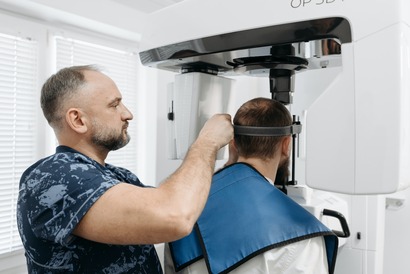Tooth Extractions
Tooth extraction, a procedure that has been practiced for centuries, remains an essential aspect of dentistry. While the ultimate goal of dental care is to preserve natural teeth, there are situations where tooth extraction becomes necessary. As a dentist, I believe that understanding the art and science behind tooth extraction is crucial to providing optimal oral health outcomes for our patients.
Why Are Teeth Extracted?
Tooth extraction is recommended when all possible treatments to save a tooth have been exhausted, or when a tooth poses a risk to the overall oral health. Common indications include:
- Severe Tooth Decay: When tooth decay extends deep into the tooth and affects the pulp, the tooth may become irreparably damaged.
- Advanced Gum Disease: In cases of advanced periodontal disease, teeth may become loose due to bone loss and need to be extracted to prevent the spread of infection.
- Impacted Wisdom Teeth: Wisdom teeth, or third molars, often lack sufficient space to erupt properly, leading to pain, infection, or damage to adjacent teeth.
- Orthodontic Reasons: Sometimes, tooth extraction is necessary to create space for orthodontic treatments, like braces, to align teeth properly.
- Fractured Teeth: Teeth with extensive fractures that cannot be effectively restored may require extraction to prevent infection and discomfort.
- Preparation for Dentures: In cases of full-mouth rehabilitation, where dentures or dental implants are being considered, extraction of remaining teeth might be necessary.
What is the Process of Tooth Extraction?
Tooth extraction is not solely a mechanical procedure; it requires a delicate touch and an understanding of the patient’s unique anatomy. A dentist’s ability to balance clinical skill with patient comfort is truly an art. A few key aspects include:
- Patient Communication: Proper communication before the procedure is paramount. Addressing patient concerns, explaining the steps involved, and discussing post-extraction care can alleviate anxiety.
- Anesthesia Management: Administering effective anesthesia ensures a pain-free experience. Dentists must choose the appropriate anesthesia method based on the complexity of the extraction and the patient’s medical history.
- Surgical Technique: Depending on the tooth’s position and condition, dentists may need to perform simple or surgical extractions. Adhering to proper surgical techniques minimizes trauma to surrounding tissues.
There is more to tooth extraction than simply removing the tooth. Other important considerations include:
Bone Structure and Density: Understanding the density and structure of the jawbone is crucial for successful tooth extraction. This knowledge helps in preventing excessive bone loss during the extraction process.
Socket Preservation: To prevent bone resorption after tooth extraction, dentists might perform socket preservation techniques, which involve placing bone graft material in the socket.
Infection Prevention: Post-extraction infection can be prevented by maintaining a sterile environment, prescribing antibiotics if necessary, and educating patients about proper oral hygiene practices.
Wisdom Teeth Removal
Wisdom teeth, also known as third molars, are the last set of molars located at the back of the mouth. While they are a natural part of human anatomy, wisdom teeth often present unique challenges that can lead to discomfort and dental issues. These common problems are the most likely reason wistom tooth removal becomes necessary.
Common Problems Associated with Wisdom Teeth
- Impaction: One of the most common issues with wisdom teeth is impaction. When there isn’t enough room for these molars to emerge properly, they can become partially or completely trapped beneath the gums, causing pain and swelling.
- Crowding: Wisdom teeth attempting to erupt may push adjacent teeth, leading to misalignment and crowding. This can undo the results of orthodontic work, necessitating extraction.
- Infection: Partially erupted wisdom teeth can create pockets in the gums, making them vulnerable to bacterial infection. This condition, known as pericoronitis, results in pain, swelling, and discomfort.
- Cysts and Tumors: In rare cases, cysts or tumors can form around impacted wisdom teeth, causing damage to adjacent teeth and the jawbone.
Given the potential complications, many individuals undergo wisdom tooth extraction to prevent future dental problems. Dentists often recommend extraction when:
- Wisdom teeth are causing pain or discomfort.
- Impacted wisdom teeth are causing infection, swelling, or gum problems.
- Wisdom teeth are contributing to dental crowding or misalignment.
- X-rays reveal potential issues or the risk of future problems.
Wisdom Tooth Removal Procedure
The process for removing wisdom teeth is somewhat similar to regular tooth extraction outlined above, however, there can be many additional complications with wisdom teeth leading to a longer recovery time. more complicated surgical procedure etc. The process can be generally outlined as the following:
1. Consultation and Examination: Before extraction, your dentist will conduct a thorough examination, often involving X-rays, to assess the positioning of your wisdom teeth and determine the best course of action.
2. Anesthesia: Wisdom tooth extraction is typically performed under local anesthesia, ensuring you are comfortable and pain-free during the procedure. Sedation options may also be available for those with anxiety.
3. Extraction: The complexity of the extraction depends on whether the wisdom teeth are impacted or fully erupted. Simple extractions involve removing fully visible teeth, while surgical extractions are required for impacted teeth.
4. Recovery and Aftercare: After the procedure, patients are provided with detailed aftercare instructions. Pain, swelling, and mild bleeding are common during the initial days, but these symptoms gradually subside. Following proper oral hygiene practices and attending follow-up appointments is essential for a smooth recovery.
While not all wisdom teeth require extraction, careful monitoring and communication with your dentist are key to maintaining your oral health. Understanding the purpose, problems, and extraction process associated with wisdom teeth can be helpful in making decisions about your dental care.

For Tooth Extraction in Swift Current
Trust Alpine Dental Clinic
Tooth extraction has been the foundation of historical dentistry. Modern day tooth extraction demands a dentist’s expertise to ensure patient comfort and optimal outcomes. By combining clinical skill, anatomical knowledge, and effective communication, dentists can perform extractions that not only address immediate oral health concerns but also contribute to the patient’s overall well-being. As dental technology and techniques continue to evolve, the art and science of tooth extraction will remain a cornerstone of modern dentistry. Contact Alpine Dental Today.



 Monday – Friday 8AM – 4PM
Monday – Friday 8AM – 4PM



